mobile View, to the German Version tap the flag


- 1937–1963 Eastern Aden Protectorate
- 1963–1967 Protectorate of South Arabia
- former possession of United Kingdom
• Overview
• Map
• Flag
• Upper Yafa
• Mahra
• Kathiri
• Shihr and Mukalla
• Other member states
In 1937 the British possessions in the south of the Arabian Peninsula became restructured. The City of Aden became in this way an individual British crown colony (Aden Colony), and the surrounding hinterland and Hadramaut became the Aden Protectorate. Before that, the area was administered from British India. In the interests of an effective management, the Aden protectorate was divided into the Western Aden Protectorate (capital: Lahej) and the Eastern Aden Protectorate (capital: Mukalla). The Western Aden protectorate became in 1959 the Federation of Arab Emirates of the South, which was renamed in South Arabian Federation in 1962. Out of the Eastern Aden Protectorate was formed the Protectorate of South Arabia in 1963, partly because the member states did not want to join the South Arabian Federation. A special history have the Wahidi-States. They originally belonged to the Western Aden Protectorate and were only briefly part of the Federation of Arab Emirates of the South in 1959. They joined the Protectorate of South Arabia in 1963. The resistance against the British was led in both parts of the country by the organizations NFL (aim: independence of South Yemen from United Kingdom and Northern Yemen) and FLOSY (aim: union with the Yemen Arab Republic, North Yemen), the Marxist NFL prevailed and the Federation and the Protectorate became united and independent as People's Republic of South Yemen on 30th of November in 1967. The states and their monarchies were abolished in this way and the country became divided into provinces. In a civil war from 1967 to 1970, the FLOSY became militarily defeated and banned.
Source:
Wikipedia (EN),
Wikipedia (D)
World Statesmen

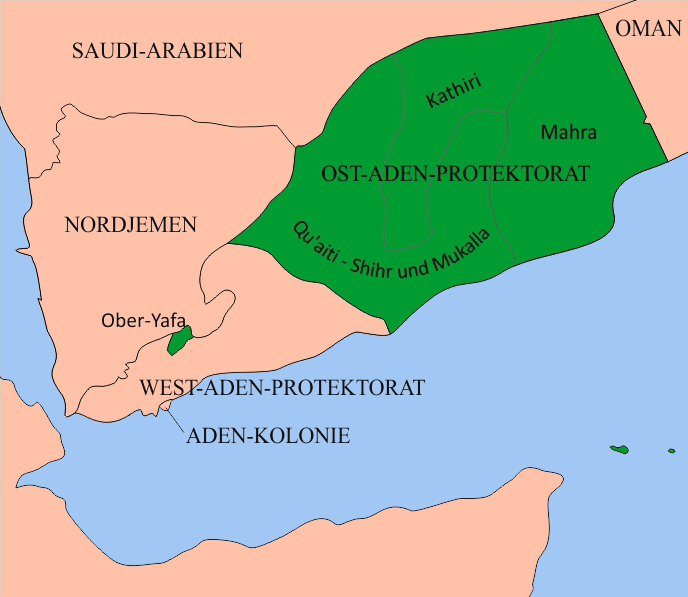
Landkarte/Map: Volker Preuß

The Eastern Aden Protectorate had no own flag, but the states within the Protectorate had one.

also: Upper Yafi, Yāfi al-Ulyā
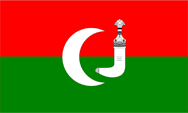
Flag of Upper Yafa,
Source, by:
Wikipedia (NL),
World Statesmen



Important specifications:
official Language: Arabic
Capital: Al-Mahjaba
Area: ca. 400 sq. mi.
Population: ca. 15.000 (1964)
Brief History of the country:
In the 18th century, several sheikdoms were established in Upper Yafa under the Al-Harhara dynasty, which were united in one sultanate around 1800. The country became a British protectorate in 1895, part of the Aden Protectorate in 1937, part of the Protectorate of South Arabia in 1963 and was abolished in 1967.
Source, by:
Wikipedia (D),
World Statesmen

also: Mahrah
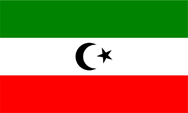
Flag of Mahrah,
Source, by:
Wikipedia (D),
World Statesmen



Important specifications:
Languages: Arabic and Mehri
Capitals: Qishn and Tamrida
Area: ca. 259.000 sq. mi.
Population: ?
Brief History of the country:
The Sultanate of Mahra emerged in the 16th century under the dynasty Al-Mahri around the city of Qishn and the island of Socotra. Qishn becomes a British protectorate in 1866, Socotra 1886. The country became part of the Aden Protectorate in 1937, part of the Protectorate of South Arabia in 1963 and was dissolved in 1967.
Source, by:
Wikipedia (D),
World Statesmen

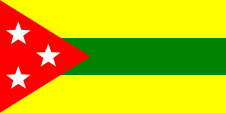
ca.1917–1967,
Flag of Kathiri,
Source, by:
Die Welt im bunten Flaggenbild



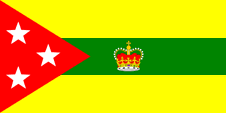
ca.1917–1967,
Flag of the Sultan of Kathiri,
Source, by:
Die Welt im bunten Flaggenbild



Important specifications:
Language: Arabic
Capital: Seiyun
Area: ?
Population: ?
Brief History of the country:
The Sultanate of Kathiri emerged in the 15th century under the dynasty Al-Kathir around the city of Seiyun. The country becomes a British protectorate in 1888 and a part of the Aden Protectorate in 1937, part of the Protectorate of South Arabia in 1963. On 2nd of October in 1967 the monarchy is overthrown and the country became abolished on 30th of November in 1967.
Source, by:
Wikipedia (D),
World Statesmen

also: Shihr and Makalla
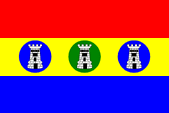
1939–1967,
Flag of Shihr and Mukalla,
Source, by:
Die Welt im bunten Flaggenbild



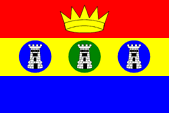
1939–1967,
Flag of the Sultan of Shihr and Mukalla,
Source, by:
Die Welt im bunten Flaggenbild



Important specifications:
Language: Arabic
Capital: Mukalla
Area: 73.359 sq. mi.
Population: 190.000 (1949)
Brief History of the country:
The Sultanate of Shihr emerged in the 18th century under the dynasty Al-Burayk around the city of Shihr. The Sultanate of Mukalla emerged in the 18th century under the dynasty Al-Kasadi around the city of Mukalla. Both sultanates were united in 1881 under the dynasty Al-Qu`ayti. The sultanate of Shihr and Mukalla becomes a British protectorate in 1888 and a part of the Aden Protectorate in 1937, part of the Protectorate of South Arabia in 1963. On 17th of September in 1967 the monarchy is overthrown and the country became abolished on 30th of November in 1967.
Source, by:
Wikipedia (EN),
World Statesmen

There were other states in the region belonging to the territory of the Eastern Aden Protectorate (from 1963 Protectorate of South Arabia), but they came at different times under British influence. Their exist in the meantime ended but some of them existed until 1962. A special history have the Wahidi-States. They originally belonged to the Western Aden Protectorate and were only briefly part of the Federation of Arab Emirates of the South in 1959. They joined the Protectorate of South Arabia in 1963. The top four in the list were abolished as the last in 1967.
Sultanate of Barhut
Sheikhdom of al-Hawra
Sheikhdom of al-Irqa
Sultanate of Qasm
Sultanate of Shabwa
Sultanate of Tarim
State of Ghayl
Source, by:
World Statesmen


![]()








